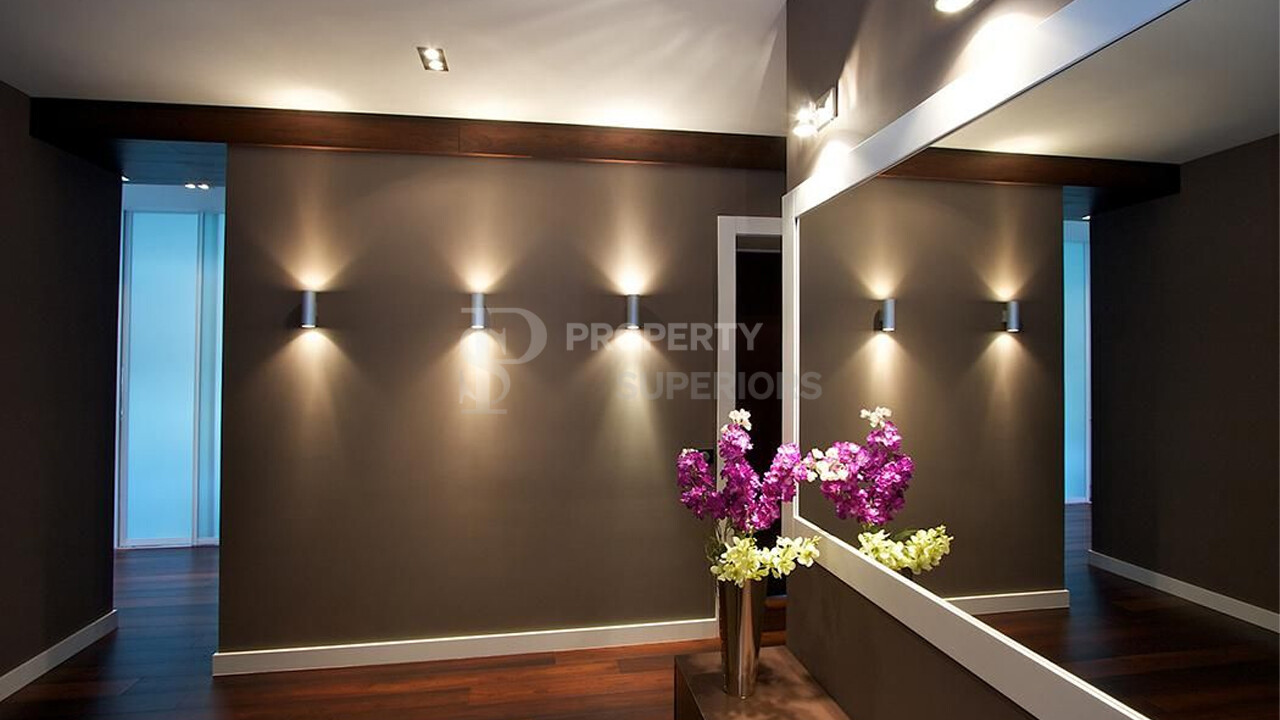
Introduction
One of the earliest types of lighting in history, wall sconces were used to hold candles. These wall-mounted light sources at eye level cast a glowy point on a surface and distribute light throughout the space.
Although wall sconces can be the primary source of lighting, they usually serve to support other light sources and set the appropriate mood. Particularly when arranged symmetrically, they give the space cosiness and structure. Wall sconces, with their variety of styles and types, add personality to interior spaces. The interiors' tone is determined by the lighting.
Qualities & Advantages
Wall sconces, in contrast to other lighting fixtures, have a distinct effect on interior elements, particularly the walls, followed by the floor, ceiling, and furniture. The placement of wall sconces can significantly alter the look of your interior design.
Enlarging the Area
Wall sconces are excellent options for smaller interior spaces. These lighting systems are wall mounted and don't need any floor space. They can give the impression of a larger room if arranged properly.
Emphasising the Particular Domain
A buffet, bar chart or reading area are just a few examples of special areas that can be emphasised with these little lighting details. It will give the space a focal point and a focused atmosphere.
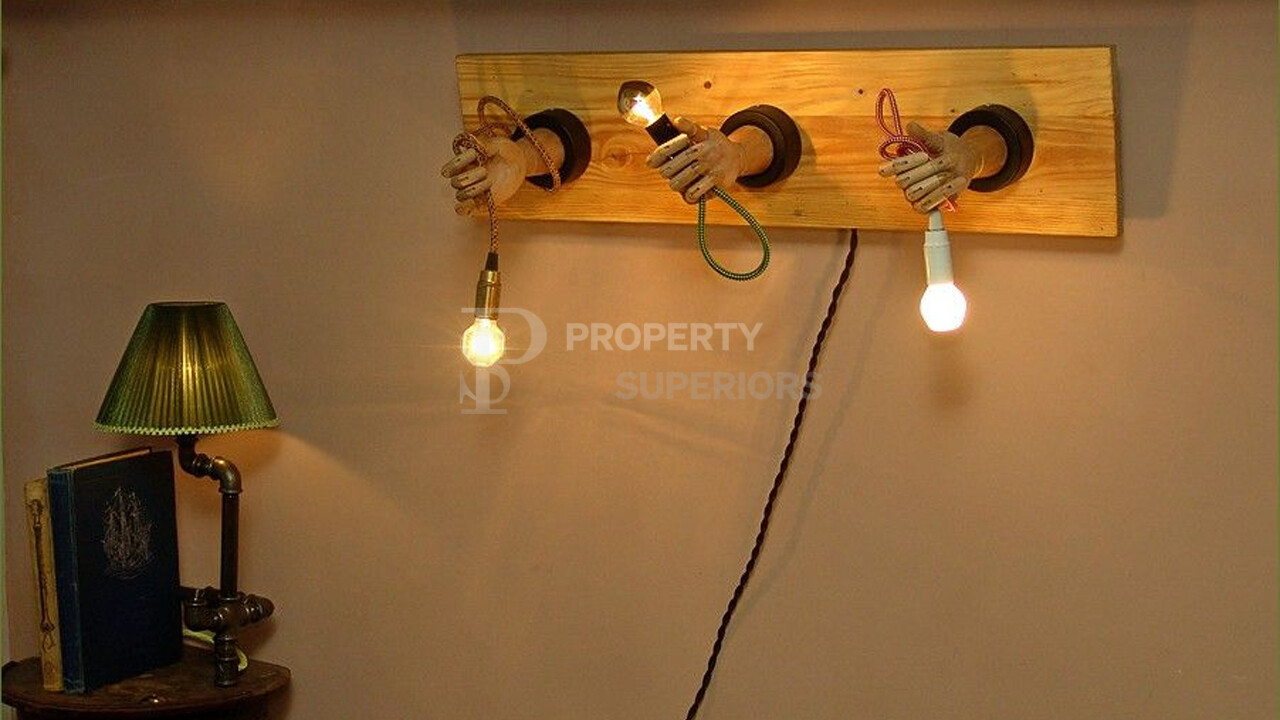
Quite Unexpected Remark
A wall sconce that only lights one item can give your interior design an unexpected accent. The wall sconces can also be found standing alone as a work of art, offering their own distinctive lighting.
Things to Think About
Quantity of Light Needed
Before adding any lighting, the first thing to think about is how much lighting is actually required. You must first determine whether to highlight a particular area of the wall or just apply a light wash. The wall sconce's preference will vary based on the situation. Next, the quantity of other lighting fixtures that are currently in place should be taken into account, as well as how to balance them with the appropriate wall sconce.
Place and Intentioned Impact
Not every wall sconce can be utilised in that particular space. It's crucial to choose between an outdoor and indoor wall sconce before anything else. It is necessary to take into account the room's size as well as the other lighting sources. The desired effect is what matters most because it will guide your decision regarding the wall sconces that will work best for your interior design.
Budget and Expense
Depending on the material, style, powering system, etc., the price would change. Plug-in and battery-operated wall sconces are generally regarded as more cost-effective options. One should take into account not only the cost of the wall sconces but also the installation, lighting, and powering.
How should wall sconces be used?
Bedroom
Lighting in bedrooms is very important. Wall sconces are mounted symmetrically on the wall behind the bed in bedrooms. These wall sconces are helpful in creating a relaxing atmosphere for reading sessions. Typically, wall sconces are used as reading lights. With lights on either side of the bed, it looks great.
Bathroom
Bathrooms tend to be smaller, darker spaces within apartments, so to create the illusion of a larger bathroom, wall sconces are typically placed symmetrically at the sides of the mirror.
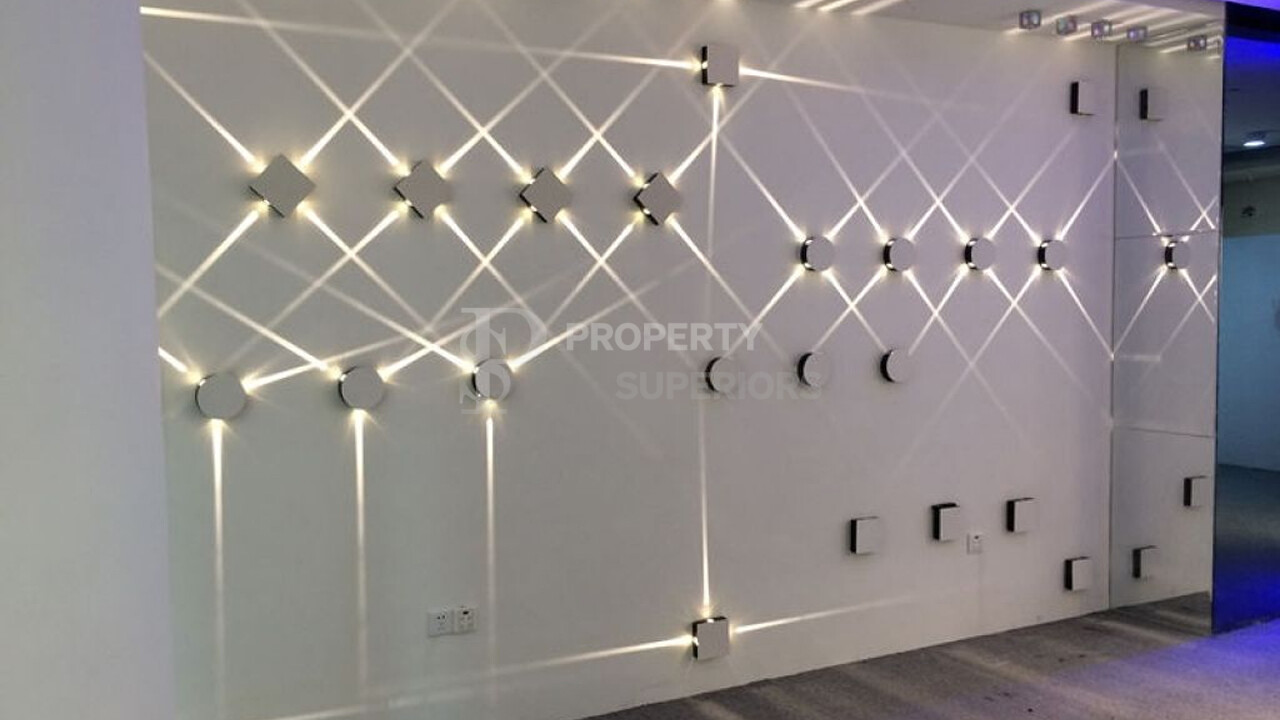
Dining Room
One of the most elegant spaces for wall sconce placement is the dining room. They can be positioned over a mirror or painting to draw more attention, or they can be used to draw attention to the buffet, the wallpaper, or both. It's crucial to arrange the placement so that diners are not blinded by glare.
Fireplace
Fireplaces provide light and warmth, but they are also the wall sconces' favourite places to be. Even in the absence of a fire, symmetrically positioned wall sconces at the sides of fireplaces will produce a dramatic effect. For the fireplace area, wallchieres can be a good solution.
Foyer
Our guests are greeted in the foyer. The presence of chic wall sconces will correct the initial impression. The wall sconces should be 7 feet above the floor in a typical 9–10 foot foyer.
Hallway
The small spaces where perspective is on the line are called hallways. Wall sconce installation will be a wise decision since it will provide direction and support perspective. A minimum of 60" above the floor is the required placement height, and multiple wall sconces should be spaced 8–10 feet apart.
Kitchen
In kitchens, wall sconces are not very popular. It can be positioned above the kitchen table or above the work area.
Staircases
Wall sconces can be mounted on the walls to add more brightness to narrow staircases and to enhance the illusion of perspective. Steps to guide the way are also more functionally highlighted.
Outdoor – Front Entry
Wall sconces are a great way to add lighting to your lovely garden. In addition, it is crucial to discuss the building's architectural details and safety.
Garage
The dimensions of the garage door should be taken into account when selecting the lighting fixture. It is possible to install two smaller wall sconces on either side of the garage door or one larger wall sconce above the door. You can place the fixtures 1/3 or ¼ of the way up the door height.
Wall Sconce Parts
- Fixtures
- Finihes
- Antique Bronze
- Chrome
- Bronze
- Copper
- Antique Brass
- Polished Brass
With the exception of natural candle ones, wall sconces are primarily operated by incandescent, LED, and fluorescent lights. The lightbulb is changing based on the dimensions and style of the sconce.
Incandescent
The soft light tone for the interiors is produced by these well-known incandescent lights. Despite being cheap, they consume the most energy. As a result, they require frequent replacement.
LED
These LED lights save energy and last a long time. They cost more than incandescent lights, but they come in a wider range of colours.
Flourescent
When compared to incandescent bulbs, fluorescent lights consume the least amount of energy and produce the least amount of heat. They come in a variety of colours and are also long-lasting. They are not practical to use in the bedroom because they are more expensive and mostly emit blue lights.
Powering
The indoor wall sconces can be powered in a number of ways:
Battery Operated Wall Sconces
Battery-operated wall sconces are less common, but they are very simple to install practically anywhere and don't require any cables or power outlets. Battery-operated wall sconces are less expensive than other types, but they require periodic battery replacement.
Connected Wall Sconces
Plug-in wall sconces are essentially updated versions of the basic wall-mounted desk lamps. Conventional electrical cords that are inserted into power outlets are what they are using. As a result, the cables are visible, giving the piece a less finished appearance. Unplugging the cord is the only way to close plug-in wall sconces because they are less convenient to operate than other switches.
Wall Sconces with Hardwires
Hardwired wall sconces are integrated into the room's internal electrical framework. They are the most widely used option. Its switch makes operating them simple. Their inability to be installed everywhere is their lone drawback. Wall sconces that are hardwired operate on a high voltage system, which is 120 volts.
Sun-Powered Energy
Choosing outdoor wall sconces that run on solar power is an energy-efficient way to keep costs down. For locations exposed to the sun for the entire year, they are more practical. You can also find wall sconces that are already made for this use, or you can purchase panels and install them on your current wall sconces, but this will require expert assistance.
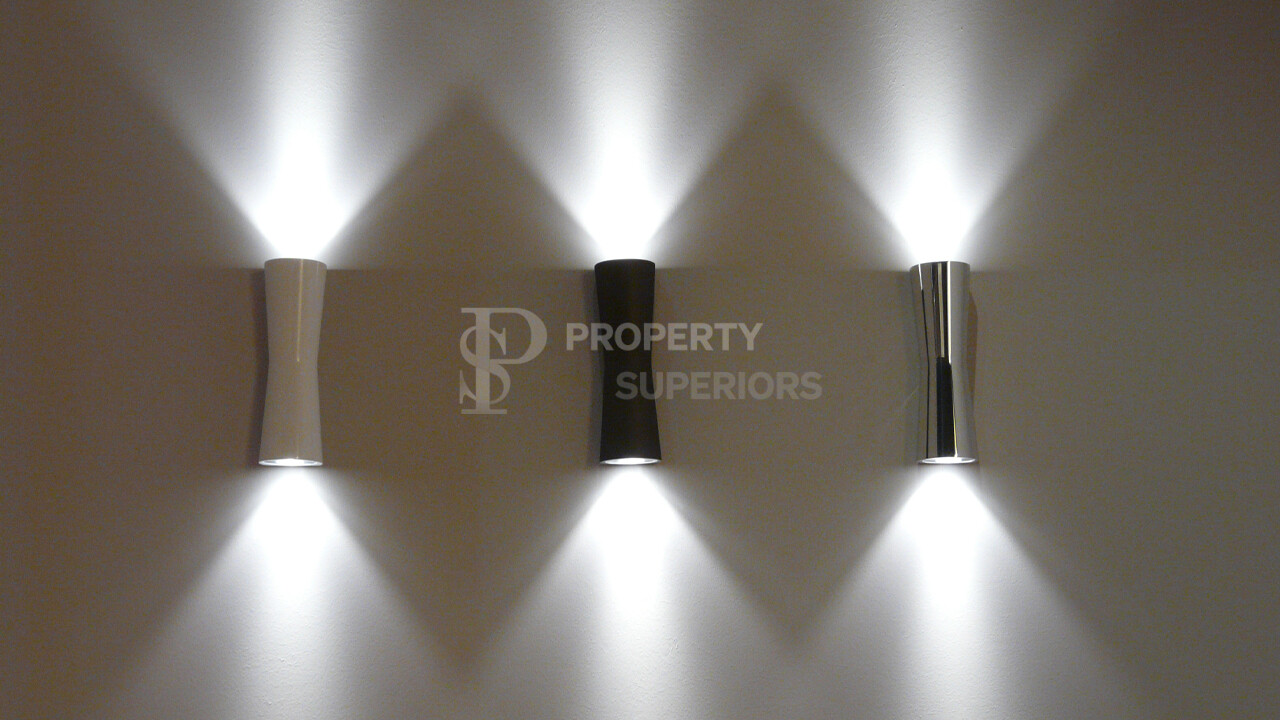
Low Power
Transformer packs and low voltage electrical cables are needed to operate low voltage lighting systems. The terms 10V, 12V, and 24V are defined. Compared to high voltage systems, they are safer and more energy-efficient. Although they require additional equipment, such as transformers and electrical cables, they are simple to install and adjust. Usually, low voltages are used to operate outdoor wall sconces.
Elevated Voltage
High voltage systems, sometimes referred to as line voltages, are the standard wiring voltage for interior spaces. Unlike low voltage systems, they don't require any specialised equipment. They are compatible because they run on the same voltage as appliances. Their installation, lighting, and fixtures are less expensive. They have greater running costs, are more difficult to install, and are less energy efficient.
UL Rating
The UL rating of the wall sconce should be taken into consideration first, even if it appears that the wall sconces are suitable for both interior and outdoor settings. Understanding the UL (Underwriters Laboratories) will help you determine whether the wall sconce can withstand conditions found both indoors and outdoors.
Dry Rated
UL Dry lights are only practical for indoor use because they are severely impacted by moisture and water.
Damp Rated
Even though UL Damp lights are more resistant to moisture and water, they still need to be covered from direct water contact and kept under porches and overhangs.
Wet Rated
UL Wet lights don't require any protection to withstand moisture or water. They don't have to be positioned beneath the overhangs and porches. It is also always possible to use these lights indoors.
Shades
- Glass
- Glazed Glass
- Glass amber
- Glass Tiffany
- Material
- Assemble
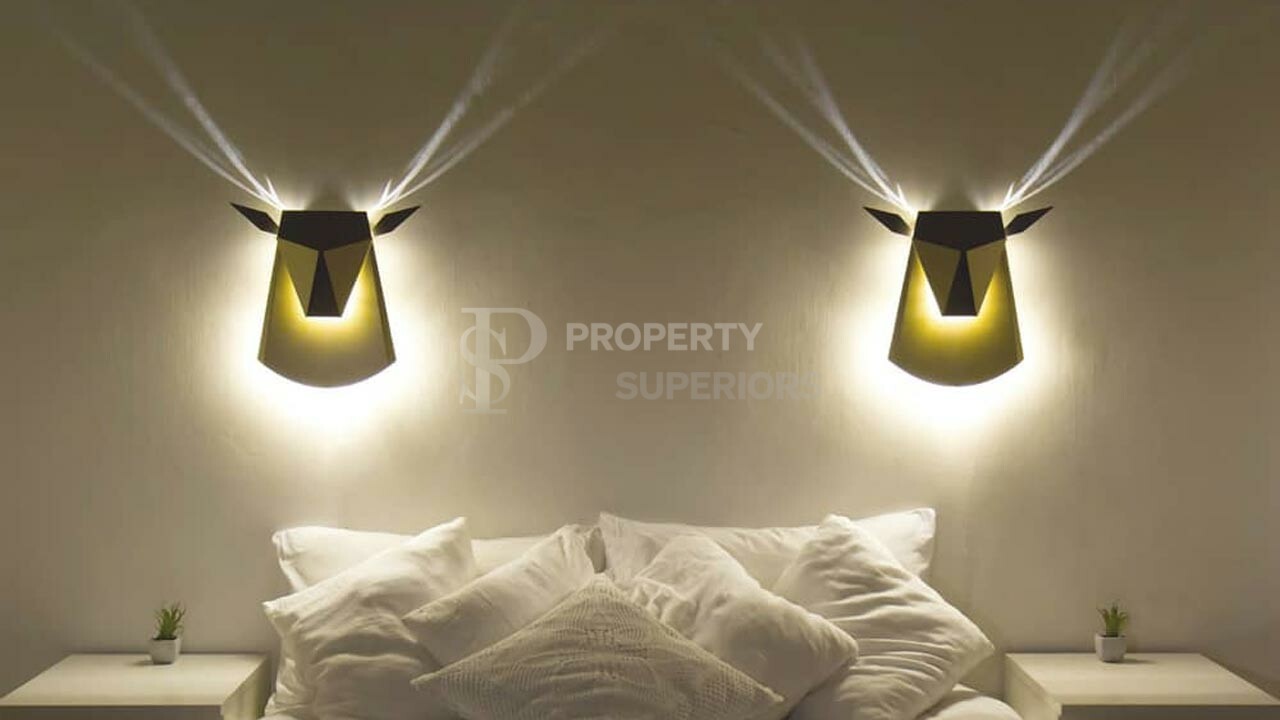
Sizes of Wall Sconces
Wall sconces are also available in a range of sizes, with the majority of their widths falling between 4 and 20 inches. Smaller wall sconces need to be installed in smaller spaces, like bathrooms. Larger sconces can be positioned in more open areas, like the building's entrance.
- The ideal length for bathroom sconces is 9 to 10 inches.
- The front door or outdoor garage door sconces ought to be ¼ the height of the door.
- Smaller task light sconces, like painting and sign sconces, should be placed near the objects they are lighting.
- Bigger wall sconces appear more attractive when arranged
Outside: Wall sconce placement outside should take the door's height into consideration. It is helpful to take the door's 1/3 height when placing a single sconce, but it is preferable to take the door's ¼ height when placing two sconces. The focus shouldn't be drawn to the wall sconces. Consequently, the wall sconces' centre should be 66 inches above the floor.
Configurations for Lighting
Brightness Up
An upward-casting wall sconce gives the impression of a larger room. Its effect doubles with the lighter ceiling.
Down Light
Task lighting can be provided by a wall sconce that shines downward. They can illuminate the dining areas, sitting areas, and stairwells when positioned for general lighting.
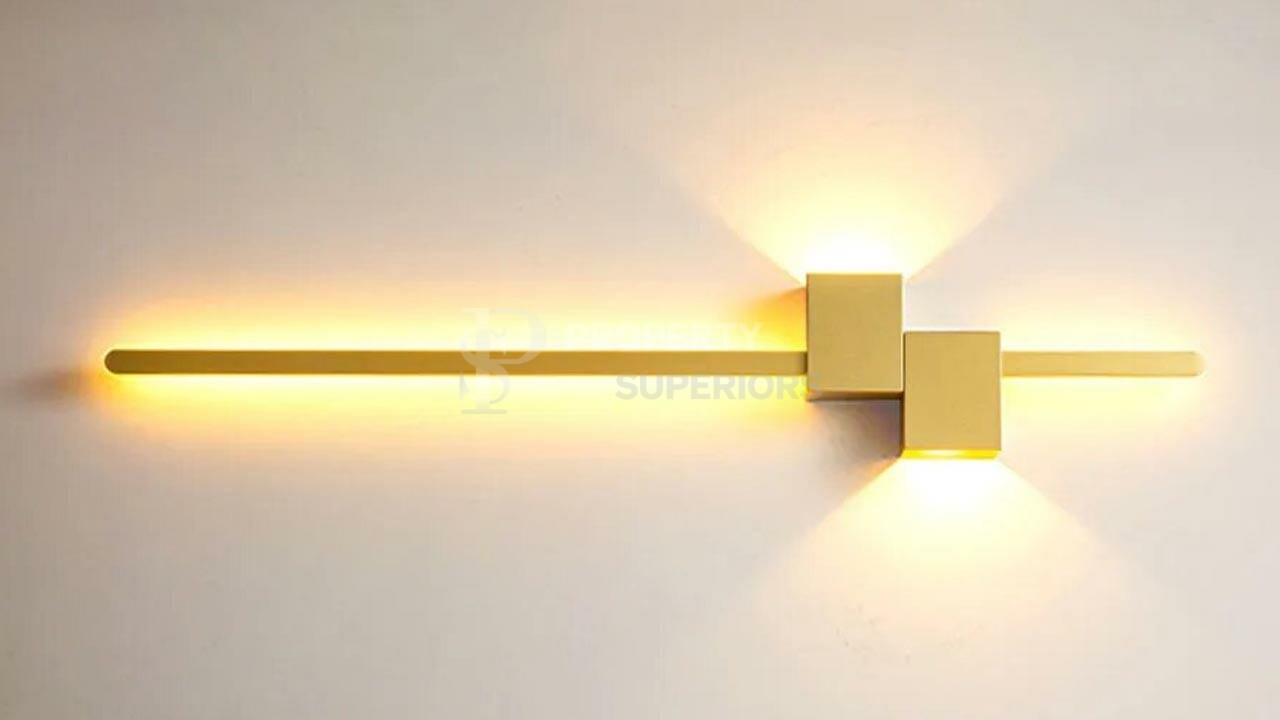
Up-Down Light
In order to create more luminous interiors, these both-way lighting fixtures cast both-way lighting. Strong light lines are being created from the floor to the ceiling when they are used more directively.
All Around
Wall sconces that radiate light in all directions are acceptable as wall design elements. They are excellent options for producing light patterns and can produce a game of light and shadow.
Wall Sconce Sources
Wall sconces typically have one light source, though some varieties are capable of holding several light sources.
- Single
- Pair
- Multi
How Are Wall Sconces Placed?
Since most sconces are located three quarters of the way up the wall, multiply the ceiling height by ¾. This will help you determine the best location for your sconces.
Horizontal
It is preferred that wall sconces be positioned vertically. The recommended height from the floor in this condition is 60–70 inches. You can move forward for the 66-72 if your ceiling is higher than nine feet. Placing wall sconces halfway between the floor and the ceiling is also practical.
Vertical
If you have a picture or mirror that you would like to draw attention to, for example, it is convenient to place the wall sconces 8 to 10 feet apart to create a continuous and soft diffuse.
Focus
Wall sconces can be used to illuminate furniture, artwork, or mirrors in addition to the interior. These wall sconces are specifically designed to highlight the needed object. Most of the time, they are positioned above the objects to draw attention to that particular piece.
Types of Wall Sconces
The Sconce with Arms
The armed sconces in dining rooms and bathrooms can be angled downward for a softer glow. By pointing these wall sconces upward towards the foyer and hallways, you can also use them to enlarge the space.
The Arm Sconce Swing
Swing-arm wall sconces are movable lights that are typically used as reading lights next to beds. Choose the best sitting position and try to position the sconces over your shoulder.
The Wall-Mount Lamp
The wall is the primary mounting surface for these wall sconces. They serve as interior light balances and can be positioned to enhance overall interior lighting.
Wall Cleaners
Wall washers give the impression that the walls are flushed with light by dispersing light throughout the entire wall. It's a useful choice for accent lighting.
Wallchieres
A soft, gloomy atmosphere can be created with freestanding torchiere lamps, which are excellent light diffusers.
Half-Moon Sconce
The name of this type of wall sconce makes it clear that they have a round closed bottom and an open top. They work well with the soft upward lighting.
Spotlight Sconce
There are specific kinds of wall sconces with arms that let the user change the brightness. They are frequently employed to illuminate a specific object.
Sink-In Lighting
It's important to distribute the lights evenly when installing the recessed light sconces. You can determine the separation between light sources by dividing the room's height by two. These fixtures, which are mounted behind the wall, can be used as walkway and stairway guides. They are practical for garage and outdoor lighting as well.
The Wall Sconce in a Corner
The 90-degree corners are specifically designed to fit the corner wall sconces. For small spaces, these wall sconces are a great way to soften the appearance of sharp corners and give the impression of more openness.
The Wall Candle
The modern takes on candle holder wall sconces are called Candle Sconces. They come in a variety of styles. They make a wonderful selection for elegant interior design.
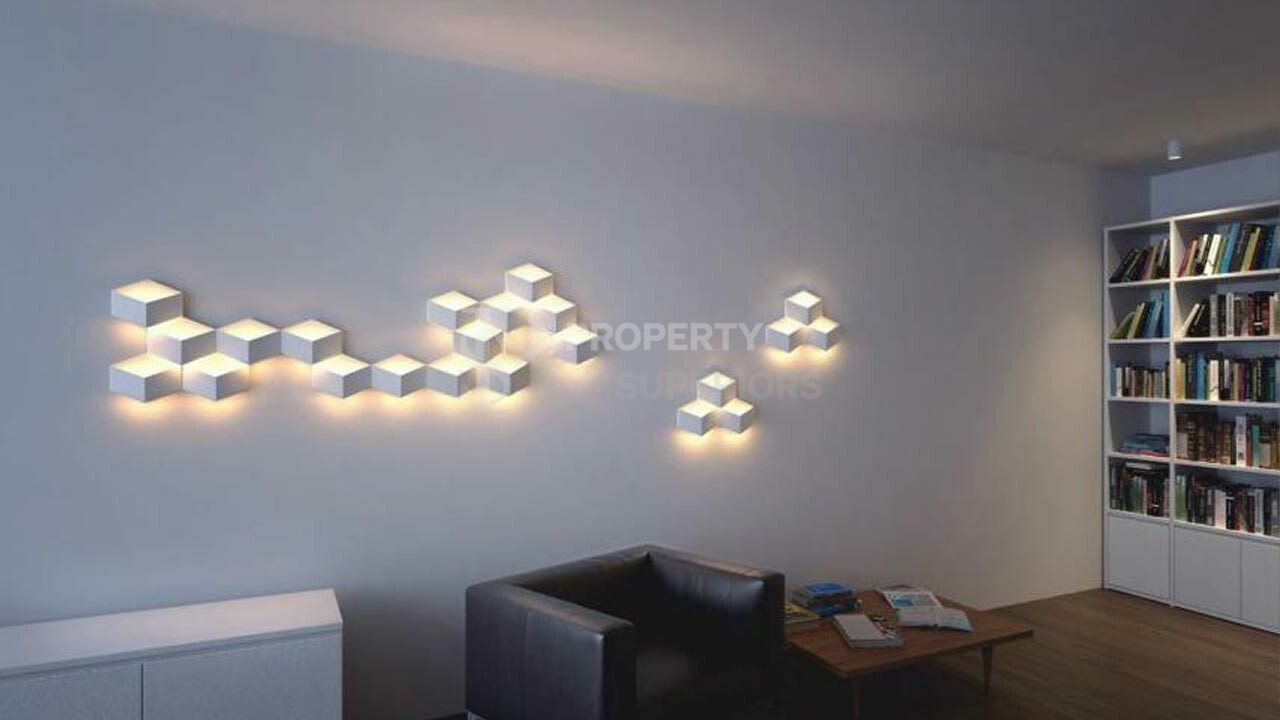
Diminished Wall Sconce
Lantern Wall Sconces are a popular option for creating a more traditional atmosphere because they are reminiscent of the oil lamp style. Their primary use is in outdoor lighting. Since they emit a gentle diffuse light, they are not recognised as powerful light sources.
Image Lighting Sconce
If the case is emphasising a particular painting, divide the painting's height in half to determine the painting's centre. Your sconce should be placed four inches from the painting's centre.
Mirror Wall Light
Placing wall sconces over mirrors will have the great effect of spreading the illumination because mirrors reflect light. At least three inches should separate the wall sconces from the mirror. Making sure that the mirror is not directly reflecting light is crucial.
Signage Lamp
Sign lighting is concentrated in a single area, just like picture lighting, but it covers a bigger area. Sign lights are primarily used to illuminate signs, but they are flooding a larger area. Their goal is to maintain the sign's message as the main focus. They are therefore primarily favoured as outdoor lights.
Styles of Wall Sconces
Deco Art
Elegantly decorated glassworks with floral wrought iron frames can be found in Art Deco wall sconces.
Country/Cottage
Wall sconces in the country style have cosy, cottage-inspired designs with small embellishments and shades that highlight the shabby-chic aesthetic.
Craftsman
Artfully crafted by hand, craftsman wall sconces are a useful addition to any craftsman-style interior design that emphasises clean, simple lines, sharp angles, and modern materials.
Modern/Contemporary
The contemporary wall sconces can be found as standalone pieces of art or as components of minimalist design. They give the interiors a more streamlined appearance because they are primarily made of metal materials.
Industrial
Wall sconces in the industrial style complement interior design themes that are urban and factory-inspired. The majority of them consist of reclaimed designs, vintage-style lightbulbs, and materials that have been patinated.
Retro
Wall sconces in the retro style with intricate hardware and unique lights will add an industrial yet sophisticated touch to your decor.
Rustic
Rustic wall sconces come in distressed finishes, darker hues, and even animal-inspired designs. They're a powerful item that can define the interiors.
Traditional
The intricately detailed traditional wall sconces feature ornaments that pay homage to bygone eras of design. Tiffany shades and crystal-adorned sconces that reflect light in their path are the most well-known examples of traditional wall lights.
Transitional
Transitional wall sconces can be thought of as existing between traditional and modern wall sconces. Transitional lighting provides sleek and minimalist details that complement a variety of interior design styles.
We appreciate your reading of this article. If you liked what you read, please share and like it.
Related posts:
"Smart Homes" are homes that have the latest technology. All of the parts of the house are controlled by technology, so they are fully automated. That means you can control everything in your home with the touch of a button,...
The process of interior design supervision involves the designer overseeing the execution of all tasks, including design, selecting personnel and materials, renovating existing spaces, and completing the project as planned.




 New provisions for obtaining Turkish citizenship through real estate ownership
New provisions for obtaining Turkish citizenship through real estate ownership
 Turkish Real Estate Rental Law 2024
Turkish Real Estate Rental Law 2024
 Ways to obtain Turkish citizenship through investment 2024
Ways to obtain Turkish citizenship through investment 2024
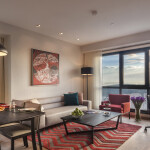 How to choose an ideal apartment in Turkiye?
How to choose an ideal apartment in Turkiye?
 Turkish passport... Extraction method and fees 2024
Turkish passport... Extraction method and fees 2024
